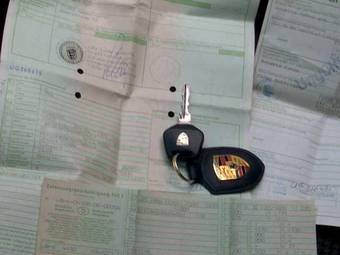1986 Porsche 944
Photo #6 - Enlarge photo 640x480

Photo Information (Width: 340px, Height: 255px, Size: 10Kb)
| Engine size - Displacement - Engine capacity: | 2500 cm3 |
| Transmission Gearbox - Number of speeds: | Manual |
| Fuel Type: | Gasoline |
| Drive wheels - Traction - Drivetrain: | FR or RR |
| Price (out of date): | $12821 |
The 944 is available with a 3.0L, 4 cylinder with 208 hp. ABS is standard as is a 5 speed manual transmission.
1986 Porsche 944 specs, Engine size 2500cm3, Fuel type Gasoline, Drive wheels FR or RR, Transmission Gearbox Manual
|
The earlier Porsche 924 had originally been an Audi project, designed under contract for the VW/ Audi company by Porsche. When VW/ Audi abandoned the project, Porsche purchased the design as the replacement for the 912E and 914. The vehicle drove and handled exceptionally well and received positive reviews, but was criticized for the Audi-sourced 2litre engine; Porsche introduced a Turbocharged 924 to increase performance, but the price was considered high for the time, which hampered sales. Rather than scrap the design , Porsche decided to develop the 924, as they had with generations of the 911; although model numbers would change, the 924 would provide the basis for its replacement. Porsche re-worked the platform and abandoned the Audi engine, installing in its place a new all-alloy 2.5 litre straight-4 engine that was, in essence, half of the 928's 5.0 litre V8, although very few parts were actually interchangeable. Not a natural choice for a luxury sports car, a four cylinder engine was chosen for fuel efficiency and size, because it had to be fitted from below on the Neckarsulm production line. To overcome the unbalanced secondary forces that make other four cylinder engines feel harsh, Porsche included two counter rotating balance shafts running at twice engine speed. Invented in 1904 by British engineer Frederick Lanchester, and further developed and patented in 1975 by Mitsubishi Motors, balance shafts carry eccentric weights which produce inertial forces that balance out the unbalanced secondary forces, making a four cylinder engine feel as smooth as a six cylinder. The engine was factory-rated at 150bhp (112kW; 152PS) in its U.S. configuration. Revised bodywork with wider wheel arches, similar to that of the 924 Carrera GT, a fresh interior and upgrades to the braking and suspension systems rounded out the major changes. Porsche introduced the 944 for MY 1982 to great anticipation. In addition to being slightly faster (despite having a poorer drag co-efficient than the 924), the 944 was better equipped and more refined than the 924, it had better handling and stopping power and was more comfortable to drive. The factory-claimed 0-60 mph time of over 9 seconds (8.3 seconds according to "Porsche the Ultimate Guide" By Scott Faragher) was actually rather modest. The factory-claimed top speed of 130mph (210km/ h), was also pessimistic, Autocar having verified a top speed of 137mph (220km/ h). The car had nearly even front to rear weight distribution (50.7%front/ 49.3%rear) thanks to the rear transaxle balancing out the engine in the front. This gave it very balanced, predictable handling at the limits of adhesion. » Read More About Porsche 944 |






